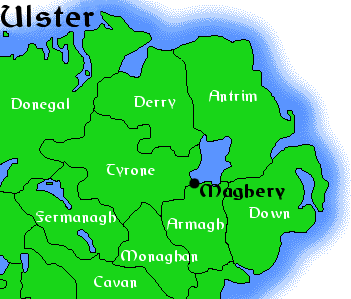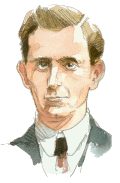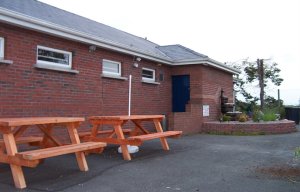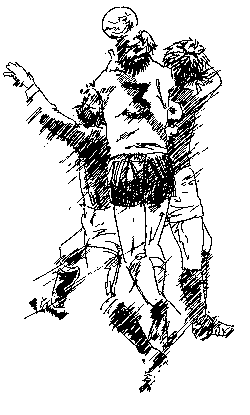|
|
News Feed | 
Armagh Senior League A 2020
| P | W | D | L | Pts |
| | | | | |
| St Patrick's | 14 | 10 | 0 | 4 | 20 |
| Maghery | 14 | 9 | 1 | 4 | 19 |
| Crossmaglen | 14 | 9 | 1 | 4 | 19 |
| Armagh Harps | 14 | 9 | 0 | 5 | 18 |
| Pearse Og | 14 | 7 | 0 | 7 | 14 |
| Sarsfields | 14 | 5 | 1 | 8 | 11 |
| Ballymacnab | 14 | 3 | 0 | 11 | 6 |
| Wolfe Tones | 14 | 2 | 1 | 11 | 5 |
As at 10/20/2016 2:52:41 AM
Detailed Table & All Results
|
|
About
Location
|
Maghery or An Machaire (meaning 'the plane') is situated on the
south west corner of Lough Neagh, where the river Blackwater meets the lough. It
is a small village, of no more than 50 or 60 households, and services many of
the surrounding areas, such as Milltown and
Columcille.
Seven miles from Portadown, Maghery is a popular centre for boating enthusiasts
and for exploring the Lough shoreline. Nearby on the hilltop stand the
impressive ruins of O'Connors (or Derrywarragh) Castle. It is a place of many
extended families, where everyone is a neighbour and certainly a friend.
It is partly due to this close knit, family like community spirit that
|
 |
|
the Gaelic Football tradition is so strong in Maghery. It has often been observed, as
indeed it has been in many other areas,that when the players take to the field -
at any level - they are willing to give their all for one another and for the
good of the team.
|
Club Name
|
 |
The club's name 'Sean MacDermotts' is in honour of the Irish Republican, and
patriot. Sean MacDermott (Sean MacDiarmada) was a member of the IRB Military
Council and the Irish Volunteers. Most famously he was a signatory of the Easter
Monday 1916 proclamation of the "Provisional Government of the Irish
Republic" ("Poblacht na H Eireann"). Sean MacDermott was executed
by the British on May 12th 1916 for his part in the Easter Rising. His last
words, in a letter to his family before his execution, were "...you ought
to envy me. The cause for which I die has been rebaptised during the past week
by the blood of as good men as ever trod God's earth...It is not alone for
myself I feel happy, but for the fact Ireland has produced such men."
|
Club Premises
|
|
Within the past few years the club has erected a new pavillion,
which replaced the old pre-fab one, or the "hut" as it was known. The new
pavillion was completely designed and constructed by local men. A proud feature
of the new premises is that the entire bar area was designed and crafted by one
of our highly skilled and talented local workers. Many members of the club
gladly gave their time, expertise and financial support during all stages of the
building work.
|
 |
Ambitions
|
 |
Like all clubs and teams, Maghery Sean MacDermots strive for
success in everything they do, particularly on the field of play. The club has a
proud tradition, boasting many great members, players and teams. The club has
enjoyed sucess at all levels, and is ever keen to add to the honours list. The
one greatest victory that has long eluded the club is success in Armagh Senior
Football Championship, despite having reached the final on four occasions (1976,
1983, 1991 and 1993) the McKillop cup has never come
to the Loughshore. No doubt it will happen someday soon, it certainly would be
one the clubs finest achivements.
|
Club Crest
|
|
The club crest depicts a scene from the lough shore at Maghery.
In the distance is Coney Island, a small island which
is about half a mile from the shore, and is reputed to be the inspiration for
its more famous namesake in New York. In the foreground is the 'pier head' as it
is called locally, a stone structured marker used by local fishermen. Nearby a
swan is swimming on the water, as some gulls fly overhead. The crest was
created by a talented artist who is a member of the club. It was first adopted
for use on the playing jersey for the 1993 Armagh Senior Football Championship
Final.
|
 |
New To Gaelic Football?
|
 |
Gaelic football is the most popular field game in Ireland. It is
one of the games organized by the Gaelic Athletic Association (G.A.A.). In most
counties, Gaelic Football is more popular than hurling. Gaelic football is
played on a pitch about 128 metres (140 yards) long and about 73 metres (80
yards) wide. The goal-posts stand 6.4 metres (21 feet) apart in the centre of
the goal lines at both ends of the field. The cross-bar between the posts is 2.4
metres (8 feet) from the ground. A team consists of 15 players: a goalkeeper, 6
defenders, 2 midfielders, and 6 forwards.
A round leather ball approxiamately 69-71 centimetres (27-28 inches) in diameter
is used. The players can kick the ball, punch it with a clenched fist, or catch
it in the air with their hands. Only the goalkeeper is allowed to pick the ball
from the ground with his hands. The other players must raise it from the ground
with a combined use of foot and hand. A player scores a goal by driving the ball
between the goal posts below the cross-bar. A point is scored by driving the
ball between the post above the crossbar. A goal is equal to three points.
The most important competition in the Gaelic Football calender is the inter-county
All-Ireland Championship. The main annual event is the All-Ireland final played
at Croke Park, Dublin, in September. About 80,000 people attend the final. Other
important competitons include the National Football League and the Inter-Provincial
Railway cup.
|
|
|
|
|